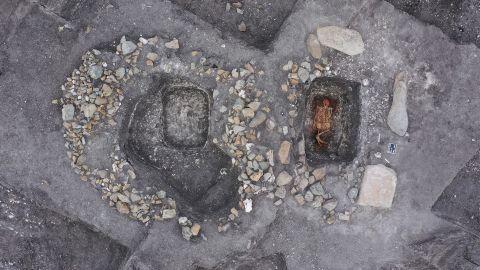
A version of this story appeared in CNN’s Wonder Theory science newsletter. To get it in your inbox, sign up for free here.
CNN
—
Scientists met this week in London at the Third International Summit on Human Genome Editing to discuss advances in the field — and the thorny ethical issues posed by a cutting-edge technology.
The last time the high-profile forum took place was in 2018 in Hong Kong. There, Chinese scientist He Jiankui announced he had created the world’s first gene-edited babies, unleashing a lingering firestorm of controversy around CRISPR, a tool for altering DNA, and the prospect of designer kids.
The organizers of this year’s conference said it’s still too early to use the powerful technique to manipulate human genes that will be passed down from one generation to the next.
But research presented at the event showed scientists have honed their gene-editing skills over the past five years and can now effectively treat some inheritable diseases.
I was privileged to meet one of the first patients in the United States to undergo this procedure.
Trailblazers
Excruciating bouts of pain were the norm for Victoria Gray, a 37-year-old mother of four from Mississippi, until a few years ago.
Born with the blood disorder known as sickle cell disease, she had to take potent, addictive painkillers to manage the debilitating episodes. Gray felt forced to make sacrifices, such as quitting the pursuit of a college nursing degree.
Now, she’s able to hold down a full-time job and enjoy family outings.
That’s because she was among the first US recipients of an experimental treatment that used the gene-editing technique CRISPR-Cas9, which allowed doctors to make precise alterations to her DNA. The procedure was grueling, but Gray told the scientists gathered Monday at the global summit it has transformed her life.
The next challenge is untangling how to make the costly treatment accessible to others with the disease, the majority of whom live in sub-Saharan Africa.
Fantastic creatures
There’s a lot to love about honeybees. They are crucial for fertilizing many fruits and vegetables as they move pollen from plant to plant.
Honeybees also waggle dance — a unique and endearing way of communicating with one another. The worker bees perform moves that signal to their fellow bees where food is located and how far it lies from the hive.
The dances can be tricky to nail, and missteps can send foraging bees off in the wrong direction.
Scientists revealed this week that waggle dancing isn’t an innate skill that worker bees are born with. Newbie workers learn it from their hive elders — a form of social education that illustrates how surprisingly complex life in a bee colony is.
Consequences

Warmer temperatures in the Arctic are thawing the region’s permafrost, a frozen layer of soil beneath the ground, and potentially stirring viruses that have been dormant for tens of thousands of years — a process that could endanger animal and human health.
To understand the risks posed by frozen viruses better, scientist Jean-Michel Claverie of France’s Aix-Marseille University has tested earth samples taken from Siberian permafrost and found ancient viral particles — including one more than 48,500 years old — that are still infectious.
While a pandemic unleashed by a disease from the distant past sounds like the plot of a sci-fi movie, scientists warn that the risks from these zombie viruses, though low, are underappreciated.
Other worlds
Astronomers have detected water molecules swirling around a young star 1,300 light-years away. The discovery helps illuminate how water might have appeared in our solar system billions of years ago.
Surrounding every newly formed star is a disk made of clouds of gas and dust left over from its birth that ultimately forms planets and comets. Chemical signals in this young star’s disk revealed water vapor.
The findings suggested comets created from our sun’s planet-forming disk could perhaps have brought water to Earth.
Water may also exist beneath the icy exterior of three of Jupiter’s moons — Ganymede, Callisto and Europa. The European Space Agency and NASA are trying to figure out whether those moons contain microbial life.
Dig this

Ancient nomads known as the Yamnaya who lived on the Eurasian steppe may have been the first people to ride horses, according to new research.
Scientists recently studied skeletons buried 4,500 to 5,000 years ago in what’s now Hungary and Romania that showed telltale patterns of stress on the pelvis, spine and thigh bones that likely resulted from the physical toll of horseback riding.
Horseback riding was a pivotal development in our history, and exactly when humans figured out how to ride the animals had, until this study, been difficult to pin down.
Another cool find this week was a sphinx-like statue unearthed in Egypt — but archaeologists believe it to be Roman.
The wonder
Make time for these remarkable stories:
— Cute alert! This zoo’s rare species breeding program is enjoying a baby boom.
— The Curiosity rover just sent back a stunning postcard capturing a shimmering sunset on Mars.
— What existed before the universe? A theoretical physicist shares his mind-blowing take.
Like what you’ve read? Oh, but there’s more. Sign up here to receive in your inbox the next edition of Wonder Theory, brought to you by CNN Space and Science writers Ashley Strickland and Katie Hunt. They find wonder in planets beyond our solar system and discoveries from the ancient world.





